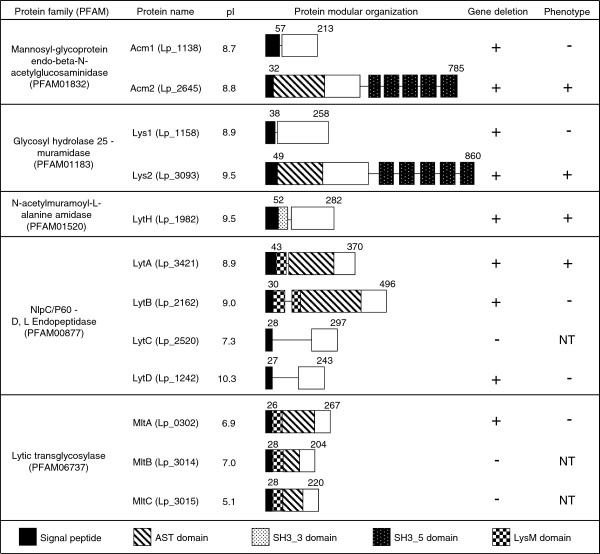Figure 1.
Schematic representation of the modular organization of predicted PGHs identified in L. plantarum WFCS1. Domain annotation is based on conserved domain database (CDD, http://www.ncbi.nlm.nih.gov/Structure/cdd/cdd.shtml) and PFAM database ( http://www.sanger.ac.uk/Software/Pfam/). Numbers at the beginning and at the end of each PGH indicate respectively the length (aa) of the signal peptide predicted by the SignalP 4.0 server ( http://www.cbs.dtu.dk) and of the full length protein. Isolelectric points (pI) of the predicted mature proteins are calculated by the Compute pI/Mw tool available on ExPASy ( http://web.expasy.org/compute_pi/). Cell-wall binding domains SH3_3, SH3_5, and LysM were assigned from PFAM accession numbers, PF08239, PF08460, and PF01476, respectively. The AST domain is a region of unknown function rich in alanine, serine and threonine residues shown to be O-glycosylated in Acm2 (Lp_2645) [19]. Symbols + and - indicate that either the gene deletion or a differential phenotype compared to the wild-type (i.e. cell morphology, growth, or autolysis) were or not obtained or observed, respectively. NT (not tested) indicates that the phenotype could not be tested since the corresponding gene deletion was not obtained.

